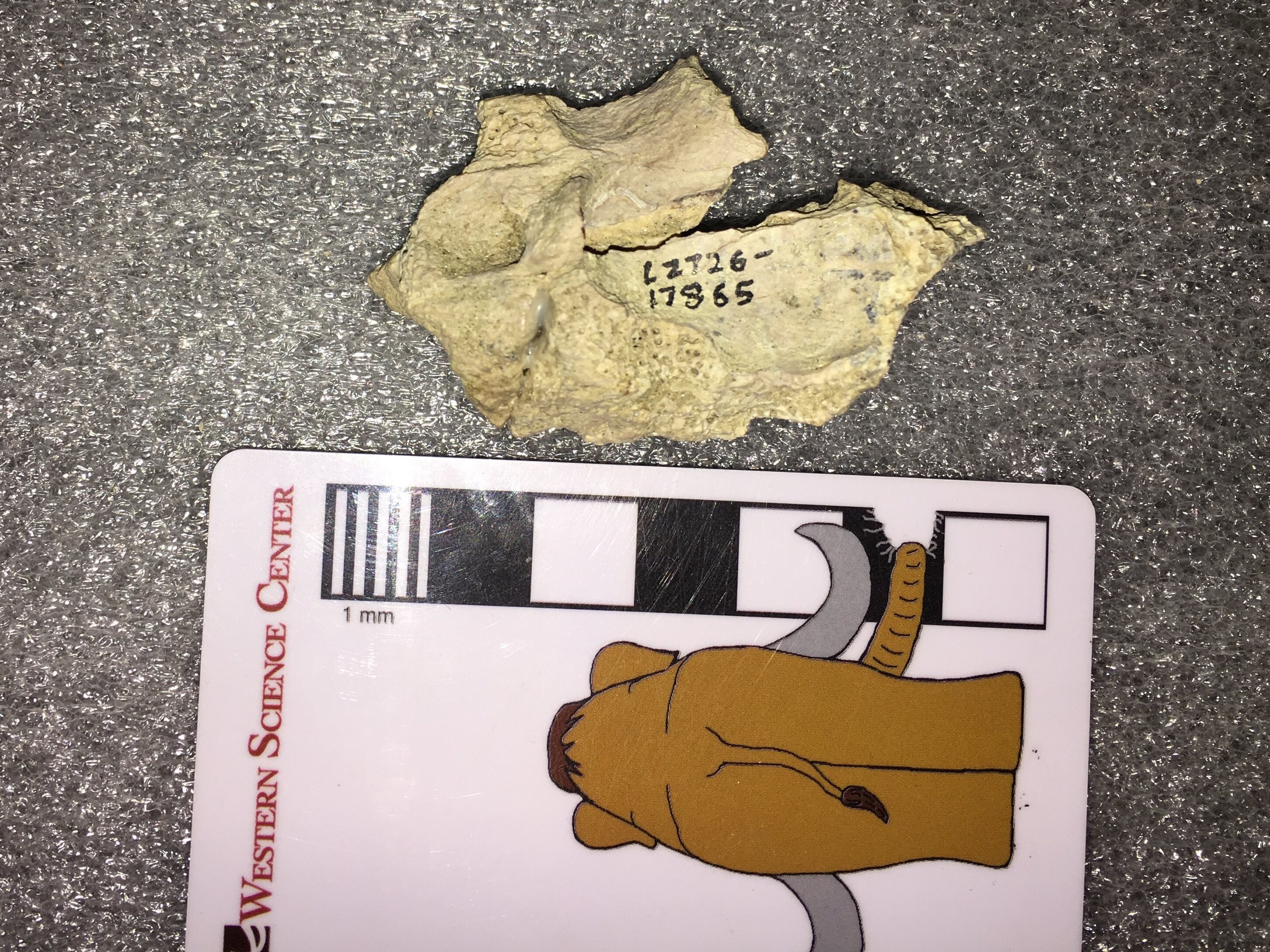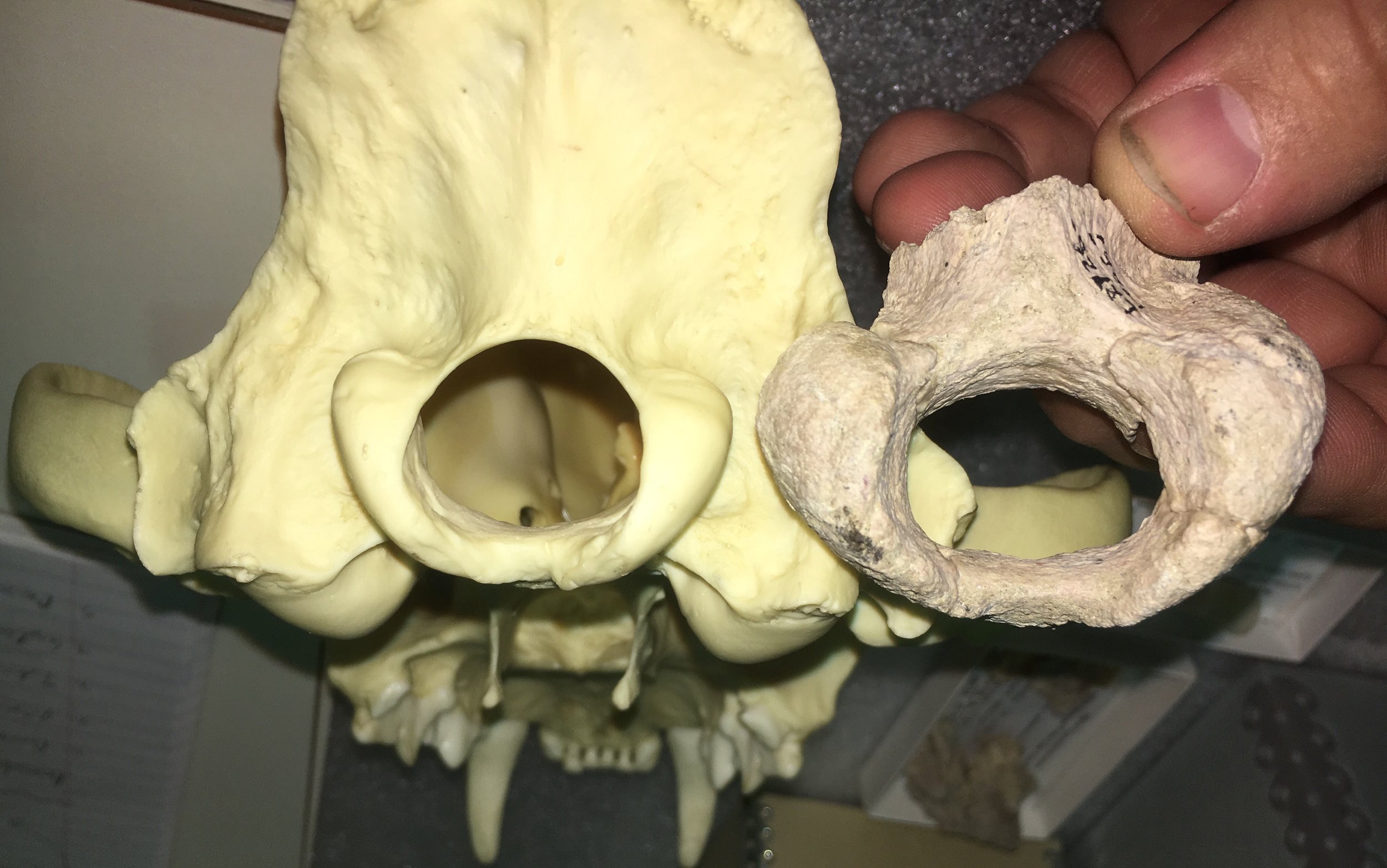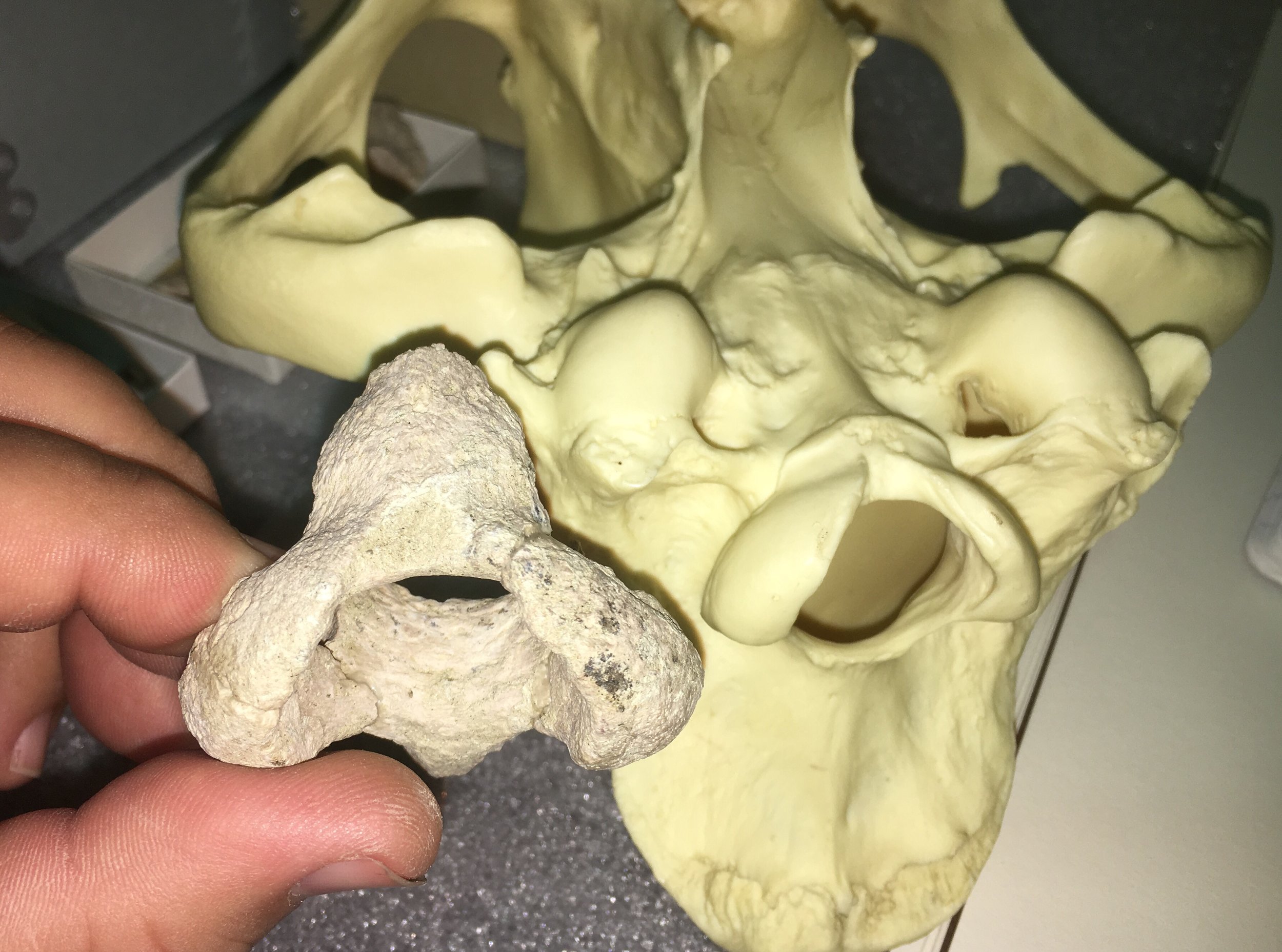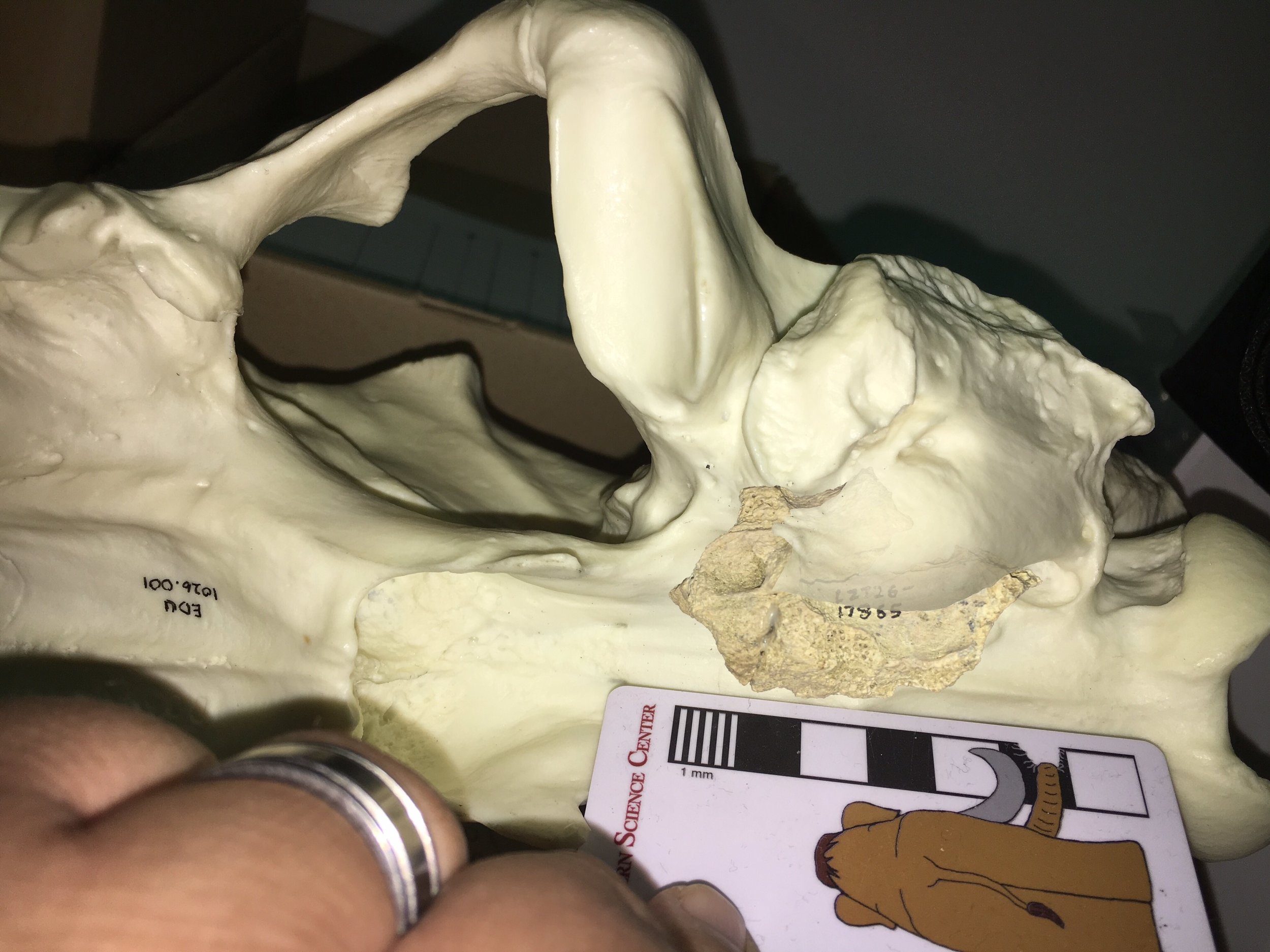 With many fossils, particularly vertebrates, small fragments can sometimes be very informative and justify close scrutiny. That was the case with a pair of associated bones from Diamond Valley Lake. One of the fragments, shown above, includes the occipital condyles that form the articulation between the skull and the first vertebra. The condyles sit on either side of the foramen magnum, the opening through which the spinal cord passes.The second fragment, below, appears to be part of the bottom of the skull just anterior to the condyles, including portions of the left squamosal and basisphenoid.
With many fossils, particularly vertebrates, small fragments can sometimes be very informative and justify close scrutiny. That was the case with a pair of associated bones from Diamond Valley Lake. One of the fragments, shown above, includes the occipital condyles that form the articulation between the skull and the first vertebra. The condyles sit on either side of the foramen magnum, the opening through which the spinal cord passes.The second fragment, below, appears to be part of the bottom of the skull just anterior to the condyles, including portions of the left squamosal and basisphenoid.  The initial DVL report identified these fragments as coming from a cat, but the type of cat was uncertain. They appear to be far too large to come from a mountain lion, and the report suggests they may be from a jaguar, Panthera onca. Today jaguars are only found in South America and as far north as Mexico (except for one individual roaming the mountains near Tucson, Arizona), but the species originated in North America and was widespread in the southern US states during the Pleistocene. However, as pointed out in the DVL report, it was very rare in the Pleistocene of Southern California and would be a surprising find at Diamond Valley Lake. We have a cast jaguar skull in our teaching collection that allows for comparison:
The initial DVL report identified these fragments as coming from a cat, but the type of cat was uncertain. They appear to be far too large to come from a mountain lion, and the report suggests they may be from a jaguar, Panthera onca. Today jaguars are only found in South America and as far north as Mexico (except for one individual roaming the mountains near Tucson, Arizona), but the species originated in North America and was widespread in the southern US states during the Pleistocene. However, as pointed out in the DVL report, it was very rare in the Pleistocene of Southern California and would be a surprising find at Diamond Valley Lake. We have a cast jaguar skull in our teaching collection that allows for comparison: The DVL specimen is much larger than the modern cast, but that's not a problem; Pleistocene jaguars were larger than modern ones. The shape is somewhat similar, but there are differences in the shape of the condyles. In an oblique ventral view (below) it's also clear that the basioccipital (the bone just in front of the condyles) is shaped quite differently:
The DVL specimen is much larger than the modern cast, but that's not a problem; Pleistocene jaguars were larger than modern ones. The shape is somewhat similar, but there are differences in the shape of the condyles. In an oblique ventral view (below) it's also clear that the basioccipital (the bone just in front of the condyles) is shaped quite differently: As it turns out, this fragment is a pretty close (if not perfect) match in size and shape for our cast of Smilodon from Rancholabrean La Brea:
As it turns out, this fragment is a pretty close (if not perfect) match in size and shape for our cast of Smilodon from Rancholabrean La Brea: Turning to the squamosal, below is the relevant area on our cast Smilodon; note that an additional bone, the tympanic bulla, is cast into this specimen and obscures part of the squamosal:
Turning to the squamosal, below is the relevant area on our cast Smilodon; note that an additional bone, the tympanic bulla, is cast into this specimen and obscures part of the squamosal: Here's the same area with the DVL squamosal superimposed:
Here's the same area with the DVL squamosal superimposed: This appears to be a very close match. There's no single feature that definitively places these bones in Smilodon, but it seems to be a closer match than Panthera onca. Moreover, while jaguars are rare in Southern California and otherwise unknown from Diamond Valley Lake, sabertooth cats are very common in Southern California deposits and are known from several DVL sites. Taken together, I think everything points to this specimen being Smilodon.* Edited to include the correct the range of the modern jaguar.
This appears to be a very close match. There's no single feature that definitively places these bones in Smilodon, but it seems to be a closer match than Panthera onca. Moreover, while jaguars are rare in Southern California and otherwise unknown from Diamond Valley Lake, sabertooth cats are very common in Southern California deposits and are known from several DVL sites. Taken together, I think everything points to this specimen being Smilodon.* Edited to include the correct the range of the modern jaguar.
